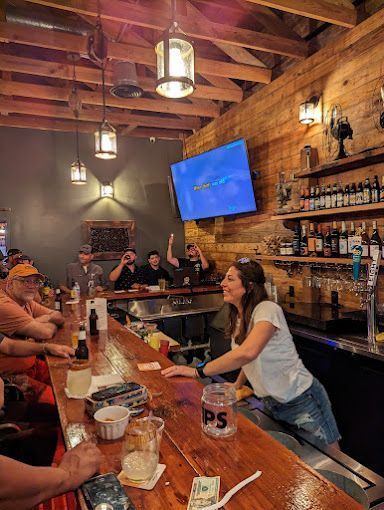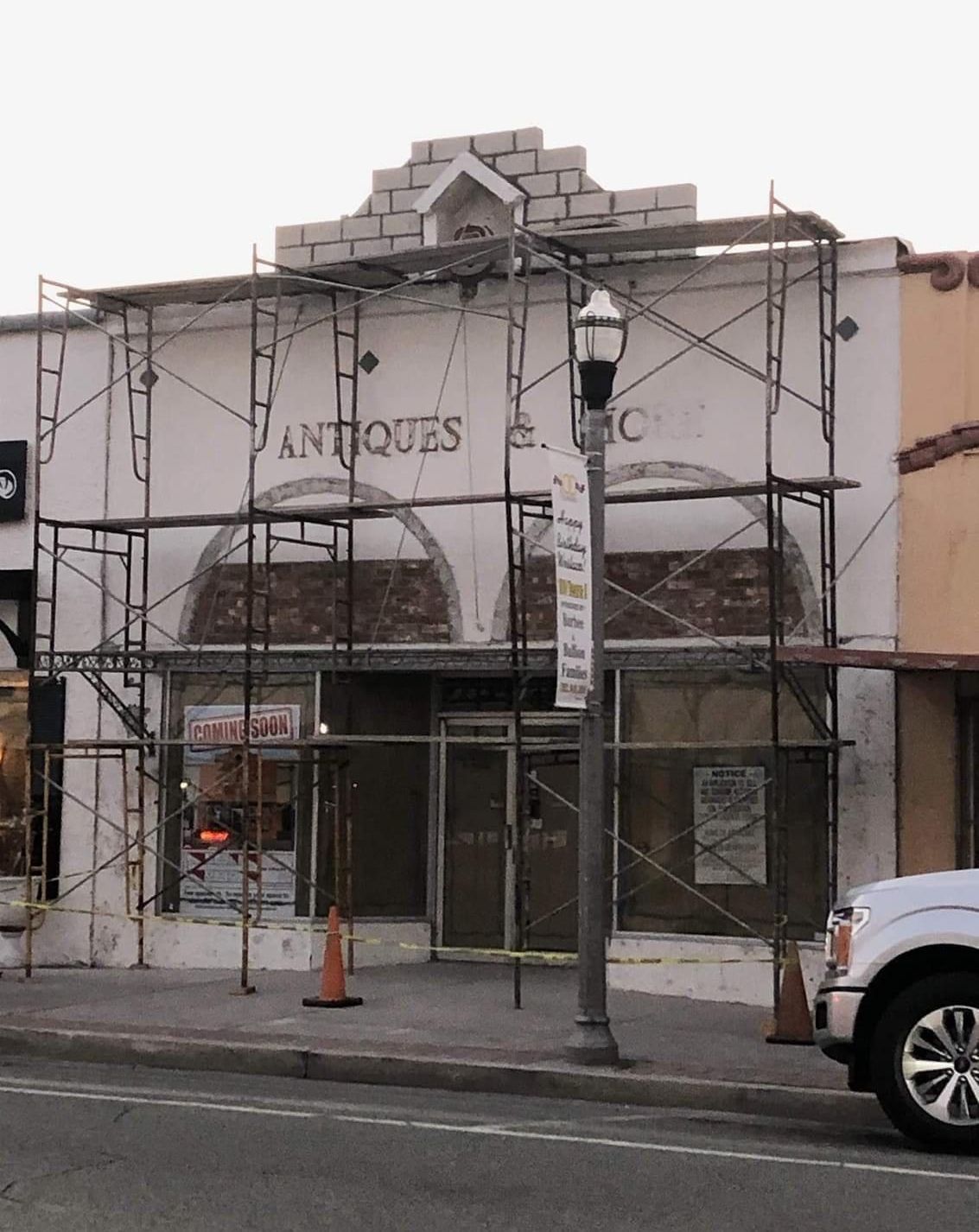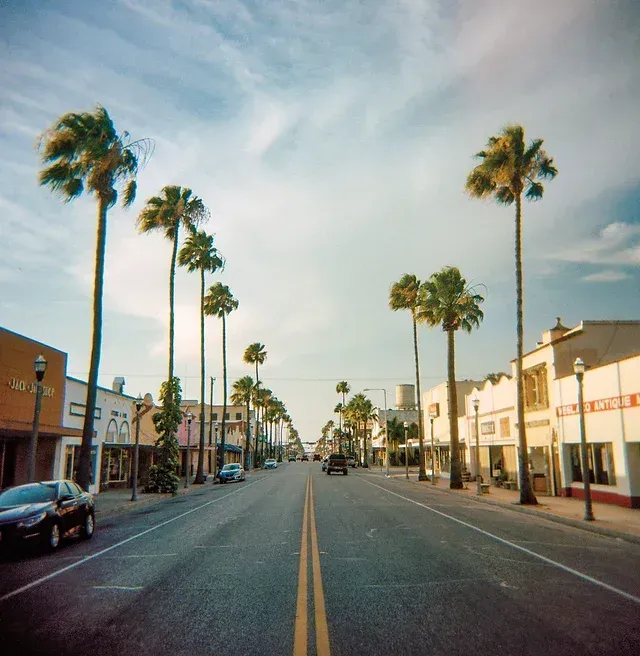Blog

By Juan Zambrano
•
August 3, 2023
Step into a world of enchantment, where the aroma of tantalizing Mexican cuisine mingles with the soul-stirring melodies of mariachi bands. Welcome to Cantina La Campana, the hidden gem nestled within the heart of Mercado Weslaco. A place where time seems to slow down, and the vibrant spirit of Mexico comes alive in every sip and every bite. Discovering the Hidden Path Cantina La Campana isn't your average bar; it's a place shrouded in mystique and allure. To find this secret Mexican speakeasy, one must embark on a journey through the bustling Mercado. As you traverse the hallway lined with captivating mini-stores showcasing an assortment of Mexican merchandise, the anticipation builds with every step. A sense of adventure fills the air, and you're drawn deeper into the heart of this hidden haven. Owners, Steve Valdez and Walkiria Alvarez Valdez, deliberately designed the path to the Cantina to evoke a feeling of discovery. "The idea was to take a journey through the market to discover the cantina," explained Steve Valdez. "A secret Mexican speakeasy." This deliberate choice heightens the experience, making it more than just a destination for a drink; it becomes a pilgrimage into the essence of Mexican culture. A True Taste of Mexico As you step into Cantina La Campana, you're immediately immersed in an ambiance that transports you to the lively streets of Mexico. The rustic decor, adorned with traditional Mexican motifs, creates an inviting and authentic atmosphere. The warm glow of hanging lanterns casts a gentle light on the wooden tables, inviting you to take a seat and soak in the surroundings. The menu is a celebration of Mexican flavors, crafted with love and attention to detail. Savor the richness of mole, the zest of fresh salsa, and the smokiness of authentic mezcal. Each dish is a culinary masterpiece that reflects the diversity of Mexico's gastronomic heritage. Live Music No visit to Cantina La Campana is complete without immersing yourself in the mesmerizing live music of local musicians and bands. Experience the soulful tunes of local bands and musicians, capturing the essence of Mexico's musical heritage. The spirited performances add magic to the enchanting atmosphere, captivating patrons with joy and celebration. Join the vibrant community celebration of live music at its finest. A Gathering Place for All Cantina La Campana is more than just a bar; it's a place where people come together to share stories, laughter, and good times. Whether you're a local seeking an escape from the ordinary or a traveler eager to experience the heart of Mexican culture, you'll find a warm welcome here. The bar fosters a sense of community, where strangers become friends and memories are made. It's a place where you can unwind after a long day, celebrate life's milestones, or simply revel in the pleasure of good company and delectable cuisine. A Mexican Hideaway in Weslaco Cantina La Campana embodies the very essence of Mexico, and its presence within Mercado Weslaco adds a layer of allure to the already captivating marketplace. The journey through the mini-stores to discover this hidden treasure creates a sense of anticipation and excitement that lingers long after you leave. So, whether you're a seasoned adventurer or a curious soul seeking a taste of the extraordinary, venture into Cantina La Campana. Sip on authentic mezcal, savor mouthwatering dishes, and let the melodies of mariachi carry you away to a world where time stands still. Experience the magic and enchantment of this Mexican speakeasy, and embrace the hidden gem that Weslaco is fortunate to call its own. Don't forget to come on Thursdays for Karaoke Nights!

By Niko Smith
•
August 3, 2023
Nestled within the heart of historic downtown Weslaco, there lies a hidden gem that exudes the spirit of Mexico - Mercado. Though a bit challenging to locate, this Mexican-themed location, brimming with an array of shops and a unique bar, promises an unforgettable experience that seamlessly blends tradition with modernity. Let's embark on a journey to unravel the mysteries and delights that Mercado has to offer. Mercado first opened its doors in 2020, a vision brought to life by the passionate owners, Steve Valdez and Walkiria Alvarez Valdez. Their dream was to create a vibrant marketplace where people could immerse themselves in the rich culture of Mexico, surrounded by a captivating collection of Mexican products, clothing, jewelry, fabrics, and ceramics. However, just as Mercado was finding its stride, the unexpected pandemic struck, forcing the business to close temporarily. But Steve and Walkiria were determined to keep the spirit of Mercado alive. They quickly pivoted to online sales, allowing customers to enjoy a taste of Mexico from the safety of their homes. The response was overwhelming, with people embracing this virtual Mexican treasure trove. In 2021, as the world began to slowly regain a sense of normalcy, Mercado triumphantly returned to its local location. The magic of the physical space cannot be replicated online. With its doors open once again, Mercado offers visitors a delightful fusion of Mexican culture, artistry, and flavors - an immersive shopping experience that goes beyond the ordinary. One of the intriguing aspects of Mercado is its deliberate embrace of secrecy. The owners wanted to create an air of mystique around their establishment, giving visitors a sense of discovery and adventure. To access Cantina La Campana, the enchanting bar hidden within Mercado, customers must traverse a hallway lined with mini-stores showcasing an exquisite variety of Mexican merchandise. "The idea was to take a journey through the market to discover the cantina," explained Steve Valdez with a smile. "A secret Mexican speakeasy." The journey begins with a stroll through the six vendor shops, each offering a distinct array of Mexican products, clothing, jewelry, fabrics, and ceramics. Each store is a testament to the craftsmanship and creativity of Mexican artisans, bringing together a colorful and diverse collection that adds character to the local scene. Finally, as you navigate your way through this captivating maze, you find yourself at Cantina La Campana - a welcoming oasis of Mexican flavors and spirits. The warm ambiance, traditional decor, and a menu teeming with authentic Mexican delights create an atmosphere of sheer bliss. Sipping on mezcal or indulging in the taste of street-style tacos, you'll feel the heart and soul of Mexico in every bite. What truly sets Mercado apart is not just the products it offers but the experience it provides. It's a place where you can get lost in the charm of Mexico, where every corner tells a story, and where the spirit of the marketplace comes alive. So, if you're looking for more than just a shopping spree, if you crave an adventure that promises to delight all your senses, Mercado is the place to be. Come visit this hidden Mexican gem, let the mysteries of the marketplace unfold, and savor the essence of Mexico in the heart of Weslaco. Whether you're a local looking for a unique experience or a traveler seeking an authentic taste of Mexico, Mercado eagerly awaits your arrival. Come Visit Us and Get a Taste of Mexico in the heart of historic downtown Weslaco.

By Niko Smith
•
August 2, 2023
The city of Weslaco stands as a testament to the resilience, growth, and cultural diversity that define the region. Its rich history weaves a tale of perseverance, innovation, and a vibrant community that has left an indelible mark on the Lone Star State. Early Beginnings: From Ranchland to Settlement Long before Weslaco became a city, the land was home to indigenous tribes, including the Coahuiltecans and Karankawas. The region's fertile soil and proximity to the Rio Grande attracted early Spanish explorers and settlers, leading to the establishment of ranching communities in the 18th and 19th centuries. However, it wasn't until the early 20th century that Weslaco began to take shape as a settlement. The introduction of irrigation systems and the extension of the railroads played a pivotal role in transforming the arid ranchland into fertile farmland. The agricultural potential of the area drew numerous settlers, mainly from the Midwest, who sought new opportunities and a better life. The Birth of Weslaco: Growth and Prosperity In 1919, the Hidalgo and San Juan Townsite Company purchased the land and laid out the plans for a new town. They named it Weslaco as a portmanteau of the W.E. Stewart Land Company, a major land developer in the area. This marked the official birth of the city. Throughout the 1920s and 1930s, Weslaco experienced significant growth as agriculture flourished, and citrus orchards, cotton fields, and vegetable farms thrived under the Texas sun. The city's economy boomed, and it became a vibrant hub of trade and commerce. The Depression and Resilience The Great Depression of the 1930s brought economic challenges to Weslaco, as it did across the nation. Yet, the community displayed remarkable resilience, with local leaders and residents joining hands to support each other through difficult times. Agricultural diversification played a key role in stabilizing the economy, and Weslaco continued to grow despite the adversity. World War II and the Airfield The outbreak of World War II brought further changes to Weslaco. In 1941, the Weslaco Army Airfield was established to train military pilots. The airfield played a crucial role in the war effort and brought an influx of personnel and activity to the city. After the war, the airfield was deactivated, but the legacy of its military history remains a significant part of Weslaco's identity. Incorporation and Modern Development On September 19, 1921, Weslaco was officially incorporated as a city, marking a new chapter in its history. As the decades passed, the city continued to evolve, welcoming new residents and businesses. The construction of highways and improved transportation infrastructure further connected Weslaco to the rest of Texas and beyond. Cultural Diversity and Heritage Weslaco's history is shaped by a diverse tapestry of cultures. The Hispanic community, including Mexican-Americans, has played a vital role in the city's development, contributing to its cultural richness and traditions. Over the years, Weslaco has celebrated its heritage through festivals, events, and community gatherings that showcase the flavors, arts, and music of its residents. A Promising Future As we fast forward to the present day, Weslaco stands as a thriving city with a strong sense of community and a promising future. While agriculture remains significant, the city's economy has diversified to include manufacturing, healthcare, and retail industries. With its warm climate, friendly people, and a rich history that reflects the American Dream, Weslaco continues to attract newcomers who seek a vibrant and welcoming place to call home. As we conclude our journey through the history of Weslaco, we are reminded that the story of this Texan gem is one of growth, perseverance, and the power of a united community. Whether you're a resident or a visitor, the charm of Weslaco's past and the promise of its future are sure to leave a lasting impression on your heart.
(956)336-3672
Mercadoweslaco@gmail.com
415 S Texas Blvd Suite A
Weslaco, TX 78596






